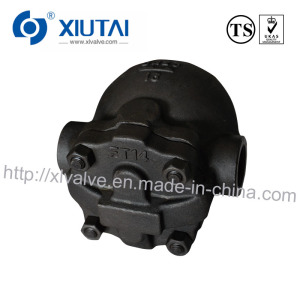Cast Steel Ball Float Steam Trap (FT14-Thread)
The FT14-T is ball float steam trap having stainless steel working internals and integral automatic air venting facility. The FT14-T can be maintained without disturbing the pipework.
Available types
FT14 (R-L) Horizontal connections with flow from right to left
FT14 (L-R) Horizontal connections with flow from left to right
Sizes and pipe connections
½", ¾" and 1" screwed BSP or NPT.
Material:
Body:A216 WCB
Bonnet:A216 WCB
Seat:Stainless Steel
Ball Float and Lever:Stainless Steel
Capacities

Capacities shown above are based on condensate at saturation temperature. When discharging sub-cooled condensate the air vent provides extra capacity. Under start-up conditions when the condensate is cold the internal thermostatic air vent will be open and provides additional capacity to the main valve. On 4.5 bar units this will provide a minimum of 50% increased capacity above the hot condensate figures shown. On 10 and 14 bar units this will be a minimum increase of 100% on the published capacity. The above table gives the minimum additional cold water capacities from the air vent. Available types
FT14 (R-L) Horizontal connections with flow from right to left
FT14 (L-R) Horizontal connections with flow from left to right
Sizes and pipe connections
½", ¾" and 1" screwed BSP or NPT.
| Limiting Condition | ||
| Body design conditions | PN16 | |
| PMA Maximum allowable pressure | 16 bar g @ 100°C | |
| TMA Maximum allowable temperature | 250°C @ 13 bar g | |
| Minimum allowable temperature | -10°C | |
| PMO Maximum operating pressure for saturated steam service | 14 bar g | |
| TMO Maximum operating temperature | 250°C @ 13 bar g | |
| Minimum operating temperature | 0°C | |
| PMX Maximum differential pressure | FT14-4.5 | 4.5 bar |
| FT14-10 | 10 bar | |
| FT14-14 | 14 bar | |
| Designed for a maximum cold hydraulic test pressure of 24 bar g | ||
Material:
Body:A216 WCB
Bonnet:A216 WCB
Seat:Stainless Steel
Ball Float and Lever:Stainless Steel
Capacities






